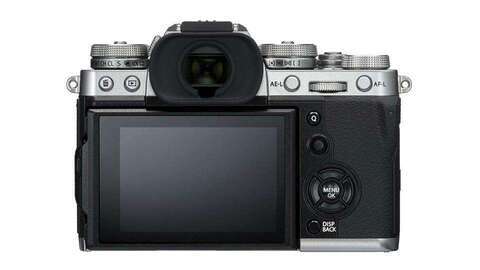Fujifilm X-T3 review: A terrific camera – particularly if you're a jack of all trades
What we want from a camera is simple, really. Stunning still files, video quality that will astound even the most jaded professional, and – why not – good looks and high-end usability. Simple! Until you use the vast majority of mid-range DSLR and mirrorless cameras, at which point you realise you can pick, at most, two from that list.
Fujifilm X-T3 review: What you need to know
But after a few days of using the Fujifilm X-T3 in anger it became clear that Fuji has pulled off an incredible feat with its new mirrorless camera. A large, APS-C sensor shooting 26-megapixel stills. 4K video at up to an industry-pleasing 10-bit and 60fps, including Log shooting for high-end colour grading. And – why not – classically good looks and more dials than the shop floor of a Rolex factory.
Fujifilm X-T3 review: Price and competition
All for a highly appealing price of a shade under £1,300.
At around £1,600 including its 18-55mm lens, the X-T3 is a strikingly good deal. Others – such as the Nikon Z6 and Canon EOS R – offer full-frame sensors, but are far more expensive. Some – such as the Panasonic GX9 – are significantly cheaper but offer a substantially smaller sensor. Certainly, finding a camera with the X-T3’s blend of features, performance and price is a challenge.
Fujifilm X-T3 review: Features and design
Starting with usability – sure, those dials make the X-T3 look like the kind of camera you’d find hanging from the neck of a grizzled conflict reporter circa 1974, but the X-T3 is one of the most usable cameras we’ve encountered because of them.
You get dedicated dials for – deep breath – ISO, shutter speed and exposure compensation on the top of the camera, and then two more dials on the front and rear right-hand shoulders of the camera as well. X-series lenses have a dedicated fly-by-wire aperture ring as well, so between all those dials and a pair of Fn buttons, you can really set the X-T3 up to shoot however you want.
Arguably, it makes the X-T3 a little hard to approach for those not up to speed with the vagaries of ISO scales and shutter speeds, but it’s heaven for photographers who want to fine-tune their own exposures. Both drive mode and metering mode are controlled by extra physical switches around the top dials, which again aids photographers who make the most of everything their camera can do.

The body of the camera itself weighs in at 539g including a battery and one memory card, and it feels supremely solid. The top plate of the camera is metal, which helps, but the switches and dials click solidly, which adds to the feeling of solidity. The body is weather-sealed, and all in all the X-T3 feels like a camera capable of going the distance.
Our solitary gripe is the vari-angle screen. It tilts up and down, as well as pivoting from left to right, allowing you to shoot around corners. Folded closed, it’s as solid as they come. Unfolded a little less so.


But we can forgive it that, not least because the 3in, 1,040,000-pixel screen is one of the finest you’ll find on a camera. Bright, clear and with lively colours, it makes framing up and image review simple. Indeed, it’s only outdone by the X-T3’s 0.5in OLED viewfinder. 3.69 million pixels make it incredibly fine-grained and therefore easy to judge focus. We used the X-T3 with both its kit lens, the XF 18-55mm F2.8-4 R LM OIS, and with Fuji’s XF 90mm F2, which has very tight depth of field, and really appreciated the accuracy with which we were able to manually focus.
On the subject of lenses, the XF 18-55mm is a peach, and Fuji’s library of X-mount lenses runs the gamut from cheap and cheerful telephotos to pro lenses as well as Fuji’s MKX series cinema glass. There aren’t many drawbacks with the X-T3 but one is its lack of in-body image stabilisation. This actually caught us off-guard at first – we’re so used to seeing it on even mid-range mirrorless cameras that using the 90mm f/2 felt astonishingly wobbly at first. That means the only way to get image stabilisation is to spend a little more on glass with image stabilisation built in.
In-body stabilisation is pretty much the only pro feature missing – ping open the memory card door and you’ll find a pair of slots waiting for you, capable of taking two cards working either simply as overflow, or as a mirrored pair, backing up your work as you go.
Fuji X-T3 review: Photo quality
Still, fire a quick enough shutter and not only will you get sharp images, you’ll get absolute bangers, because the X-T3 is about as capable as they come. The kit lens we got with the camera is a stunner: sharp and reasonably (rather than outstandingly) contrasty, with a pleasing reluctance towards purple fringing. Dynamic range is good too, and ISO performance was excellent. Two ISO 1600 images were basically indistinguishable from each other, noise-wise, and then ISOs 1600 and 3200 were difficult to tell apart.
Start reaching for the stars and you’ll start to see some degradation, with a slight diminution in colour fidelity at ISO 6400, which worsened significantly when we boosted the ISO by another stop to 12800. Still, an APS-C camera which produces usable images to ISO 6400 is a superb bit of kit, giving photographers plenty of flexibility.
Fuji X-T3 review: Video quality
Indeed, “flexibility” may as well be the X-T3’s middle name, because the only thing that matches – possibly surpasses – its photographic abilities are its video modes. As mentioned, it shoots 4K at up to 60fps, and in 10-bit. Its maximum 4K bit rate is 400Mbits/sec, and it also shoots in F-Log, Fuji’s own Log mode for those who want to get the most from their colour grading process. (For those starting out, a handy LUT is available on Fuji’s website.) A high-speed 1080p mode is also available, allowing filmmakers to shoot up to 120fps.
Irritatingly, just as this review was finished and the X-T3 went back, Fuji made firmware 2 available. We haven’t tried it, then, but it adds 4K HDR recording, as well as – and this is impressive – dual film simulation and F-Log recording, allowing the camera to record 4K Log footage, while displaying footage with a LUT applied on an external monitor. If you shoot video and just got an X-T3, make sure you’ve updated to the newest firmware and these additions make the X-T3 – absurdly – even more appealing for filmmakers.
Fujifilm X-T3 review: Verdict
Just about every other box is ticked. 3.5mm jacks for headphones and a microphone, of course, as well as Bluetooth and Wi-Fi for ease of image transfer and remote photography. There are an absolute thimbleful of drawbacks, chief among which is battery life. With a CIPA rating of under 400 images, and a video recording time of just 40 minutes in 4K, at least one spare battery is a must. A useful-looking add-on is the X-T3’s battery grip, a £300 addition that allows you to use the X-T3 with three batteries installed at once. Alternatively, you can supply power via the USB-C port.
Picking out drawbacks beyond that is tricky. If you’re a video professional, the X-T3 ticks a whole lot of boxes. For stills photographers, bigger sensors are available for roughly the same outlay elsewhere, but even so, with superb ISO performance, build quality and handling – particularly for experienced photographers – the X-T3 is a cracker. The obvious front-runners in the DSLR race offer far bigger lens libraries, but even so there’s enough available for the X-mount that most photographers will be perfectly happy. A terrific camera – particularly if you’re a jack of all trades.
|
Key specifications |
|
Effective still resolution |
26.1 megapixels |
|
Display |
3-inch touchscreen, 1.04 million dots |
|
Image stabilisation |
No |
|
Autofocus |
425-point AF |
|
Video |
4K |
|
Connectivity |
Wi-Fi and Bluetooth |
|
Battery energy content |
7.2 Watt Hours (approx 390 images) |
|
Dimensions |
58.8 x 132.5 x 92.8mm |
|
Weight |
540g |